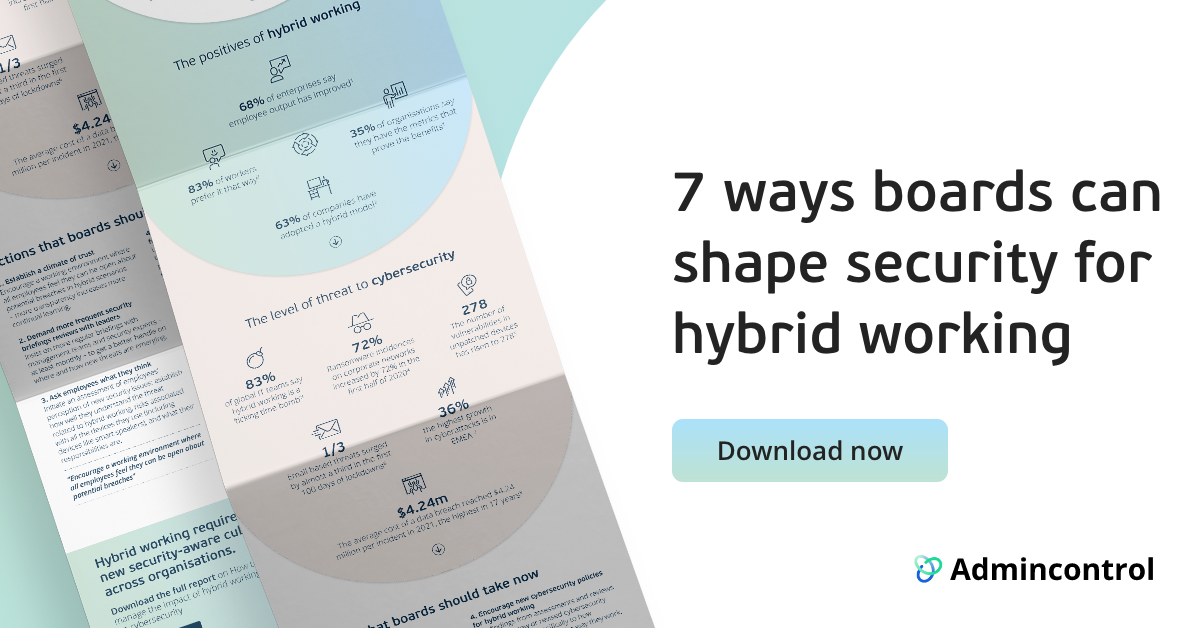In today's digital age, remote work has become the norm. However, with this shift comes the increased risk of cyberattacks and breaches. To shed light on this critical topic, we have gathered valuable tips on improving remote work security while working from home.
The dramatic rise of remote and hybrid working has changed how we live and work. Its impact is far-reaching, creating a ripple effect in our families, our mental and physical health and the time we have available for other responsibilities, such as caregiving.
The benefits of greater flexibility in our working lives are well documented, including increased productivity and job satisfaction, lower absenteeism, reduced costs for both employer and employee and a contribution to environmental responsibility from reduced commuting and travel.
Working from home hugely benefits workers: they gain, on average, 72 minutes a day, have higher job satisfaction and are less likely to quit. Its rise has sparked something of a moral panic among some bosses, but this misses the fact that working from home is generally also good for employers. It dampens wage inflation, it means employees are more productive – and employees spend about half of those extra 72 minutes on work.
The Guardian
But, when millions of workers are signing in remotely to corporate networks, there is also an increased threat: Cyberattacks. While IT teams inevitably are tasked with the complex decisions and policies that govern digital security, remote work security and how to prevent cyberattacks are issues we must all engage with.
Yet, although chat applications, document-sharing software and conference or video call technology are essential tools for remote workers, many still do not fully consider the risk of remote work security, cyberattack and broader security concerns.

Out of control?
According to research, global cyberattacks increased by 38% in 2022 compared to 2021. Europe saw the third highest increase (26%) after North America and Latin America, while the UK saw the most significant increase of 77% within Europe.
The Nordic countries have seen a notable increase since October 2022, with attacks on private and government organisations surging across the region.
‘Based on intelligence from national cyber defence centres, Sweden, Norway, and Finland raised their cyber threat levels to amber in January, with Denmark deciding to elevate its threat level to high, reflecting a series of attacks that targeted government departments and banks, including an 11-hour sustained strike against the Ministry of Defence’s main IT network.’
ComputerWeekly.com
No region, country or organisation is immune to the growing cyber threat, and with the ongoing conflict in Ukraine, cyber defence agencies are warning of further dangers from Russia, North Korea and possibly China through the remainder of 2023. While geopolitical tensions contribute to the increased threat level across Europe, hackers also take advantage of the tools and technology commonly used for effective remote working.
‘...hackers are widening their aim to target business collaboration tools such as Slack, Teams, OneDrive and Google Drive with phishing exploits. These make for a rich source of sensitive data given that most organizations’ employees continue to work remotely.’
Check Point
Now that artificial intelligence (AI) tools such as ChatGPT are readily available, experts highlight that while automation technology brings substantial benefits, inevitably, hackers will seek to exploit its advanced capabilities to deliver more sophisticated attacks in the future.
As a result, the technologies we come to rely on or that bring substantial benefits to our world can also be significant problems. The question of how to prevent cyberattacks is one for both individuals and organisations. And for companies, it’s an issue that must be considered by everyone in an organisation from the top down.
Security is a topic that everyone in an organisation must take part in, and continuously must be on the top management agenda.
It is importance of being extra vigilant, especially now that more people work remotely from home.
Admincontrol´s tips on how to prevent cyberattacks when working remotely:
Use VPN
When working away from your company office, ensuring you have a secure connection to the internet and corporate software is vital. Using a VPN (Virtual Private Network) to access the internet encrypts and protects the traffic from your computer. This means hackers cannot track your IP address and provides an extra layer of security. Many organisations insist on using a VPN by their employees when using any corporate device, including smartphones and laptops, to enhance working from home cyber security prevention.
Use your company devices for work-related tasks
Your work devices are usually equipped with additional security solutions and integrated protection that are quality-assured by your IT department. This way, your IT department can ensure that the device is updated and protected 24/7. Therefore, using a device your company has provided to perform all work-related tasks is the most secure way to work remotely.
Use cloud services approved by your company
Cloud services are a great way of sharing sensitive documents, performing online meetings and virtual collaboration. Cloud-based software and technology are therefore indispensable to remote working, but remember that the security of such services can vary depending on the services they provide. Enterprise cloud solutions have much greater security than free solutions. Therefore, always check with your company which cloud services are approved for use based on your organisation's security requirements.
Don´t use your work device for personal tasks
Your company device is provided for work purposes, so you should not use it for private matters. Don´t mix personal and work, as this might expose your company device and information to greater risk. Moreover, since your device is mostly likely monitored and backed up, personal and non-work information could be included in those backups.

If in doubt, don’t click
Cybercriminals are taking full advantage of the growth in remote working, and phishing attacks remain one of the biggest global cyber threats. If in doubt or a link seems suspicious, do not click on it, even if the email appears genuine and from one of your contacts. Imitating one of your contacts is one of the most common tricks a hacker uses and may mean your personal information and that of your company is compromised. Unusual requests, poor spelling/grammar and odd-looking links are typical signs of a phishing email.
Read more about what phishing attacks are and how to avoid them in blog post: How to watch out for phishing emails
Don’t share sensitive information by email
Email is considered an essential work tool but unsuitable for sending sensitive or personal information as emails lack encryption meaning the information they contain can be intercepted and read more easily. It’s also very easy to accidentally email the wrong contact or person, increasing the likelihood of leaked confidential data.
Alongside your email client, consider using advanced software, such as a data room or board portal, that offers a secure messaging channel by encrypting the information contained within the message. Collaboration, document sharing and discussion with colleagues are protected inside a safe and secure environment since these software solutions use advanced encryption standards similar to those used by banking institutions. There are also further layers of added security, such as two-factor authentication (2FA), to help control who has access to what.




